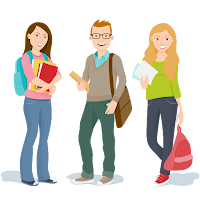Based on this, the learning process is effective, efficient and innovative demands that cannot be avoided. In this case, it is the teacher's role as an educator become the main key to this process. At least, how about a The teacher can use a variety of learning models can help students to learn effectively and efficient.
this blog will discuss about models learning that can be a reference for teachers applied in learning. Various learning models which can be applied to specific subjects. Thus, learning is done in the classroom can be effective and efficient. Welcome to explore inspiration in dutyfiles blog for your student learning!
The problem faced by the current education system lies in four main points. That is,
curriculum, learning methodology, funding,
and institutional reorganization
For a while, curriculum
used is considered sufficient because it is formulated,
stipulated and periodically coordinated from
the central government in this case the Ministry of Education.
Although, reap sharp criticism from various circles.
Because, every change of leaders, change the curriculum, but elements
the scientific subjects studied do not change
Table of contents:
This condition is the main cause of this stagnation of the learning methodology used. Methodology learning is the spearhead of the curriculum. If the curriculum does not change, the learning methodology becomes permanent and unchanging. In fact, methodology learning is the key to unlocking insights applicative knowledge and technology. Science and applicable technology is the key to sustainability human in the future. That can only be reached with how to create skilled, skillful humans smart, creative and innovative. By relying on a method learning exists and is used today, it is not might happen. Therefore spectacular learning models are needed so that educational goals can be achieved effectively and efficiently.
Selection Technique Learning Spatial Layout Study Room
The Learning Spatial Selection Technique is actually not included interactive learning process techniques, but only limited the selection of a safe, comfortable, calm, and learning layout fun (conducive) to do the learning process teach. In other words, this technique is a technique supporting teaching and learning process because it is directly not involved in the learning process carried out teacher and student.However, with the selection of spatial planning well, hopefully students can learn with a feeling of security, calm, comfortable, and pleasant. In addition, the teacher too will feel the same way. Thus, the process learning can take place maximally. The target is a psychological element of teacher and student.
There are many spatial alternatives that can be used. Here are some conventional (general) spatial designs might be made as an option.
The Classical Model
The Classical Model is a student learning desk layout model who line up face to face with the teacher. The teacher in front class facing students. At the time of the exam / test, table-chair distance students are kept away from each other to avoid cheating or cheating cooperation with each other. The number of seats usually adjusts the size of the classroom used. The Classical Model is a classroom layout model the most widely used in almost all educational institutions, both formal and educational institutions non-formal. The design and layout used are included simple, easy, and considered more communicative. Teacher as an educational resource dealing with students as an agent of the learning process at school.
The Facing Group model
The Arena Performance Model
The Group Presentation Model
The Debate Figure Model
The audience also has the right to ask questions, opinions, rebuttal, opinion assistance, ideas, and opinions to participants debate after getting a chance from the moderator. Moderator in this case it acts as a guide as well as a leader the course of the event. Meanwhile, the teacher acts as a resource the main, the observer, and the judge of the course of the debate. The Debate Model is very effective and well targeted foster self-confidence and practice abilities reasoning power and rhetoric (dialogic communication) students. With debate characters, usually children become more critical and have analytical skills doubled from the method ordinary discussion learning. In this model, on the side mental stress factor for winning, elemental motivation captures the intellectual values of the interlocutor also triggers the birth of critical power and analysis of students in difficult time.




Check the Notify me box to get notified via email when someone replies to a comment.
URGENT...! Make sure your comments are in the form of questions, corrections, or other similar things that are USEFUL (for you or maybe for other users in the future). Comments that are trite (such as thanks, hopefully useful or something similar) will be deleted